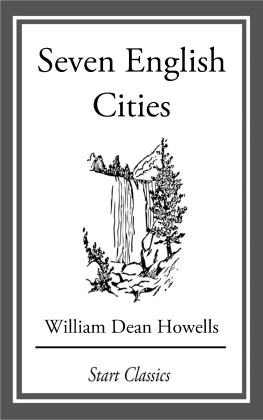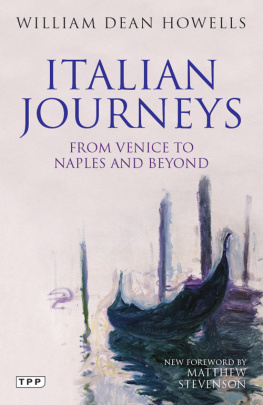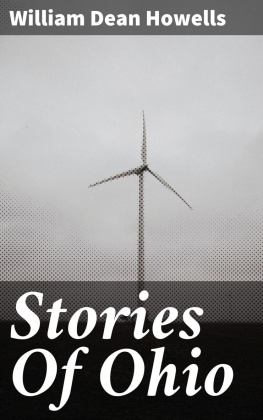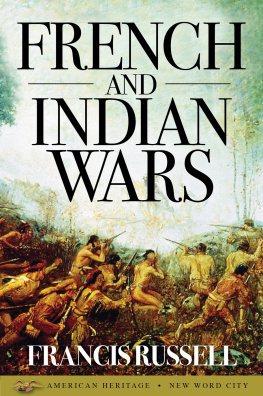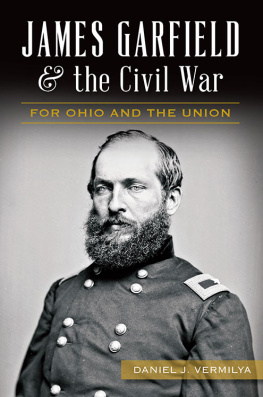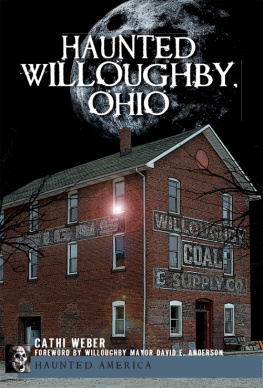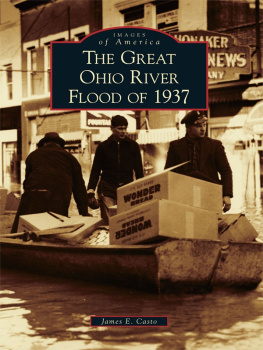William Dean Howells
Amazing Stories from the History of Ohio
(Illustrated)
e-artnow, 2015
Contact:
ISBN 978-80-268-4900-1
Preface
In the following stories, drawn from the annals of Ohio, I have tried to possess the reader with a knowledge, in outline at least, of the history of the State from the earliest times. I cannot suppose that I have done this with unfailing accuracy in respect to fact, but with regard to the truth, I am quite sure of my purpose at all times to impart it.
The books which have been of most use to me in writing this are the histories of Francis Parkman; the various publications of Messrs. Robert Clarke and Co. in the "Ohio Valley Series"; McClung's "Sketches of Western Adventure"; "Ohio" (in the American Commonwealths Series) by Ruf us King; "History and Civil Government of Ohio," by B. A. Hinsdale and Mary Hinsdale; "Beginnings of Literary Culture in the Ohio Valley," by W. H. Venable; Theodore Roosevelt's "Winning of the West"; Whitelaw Reid's "Ohio in the War"; and above all others, the delightful and inexhaustible volumes of Henry Howe's "Historical Collections of Ohio."
W. D. H.
I. The Ice Folk and the Earth Folk
The first Ohio stories are part of the common story of the wonderful Ice Age, when a frozen deluge pushed down from the north, and covered a vast part of the earth's surface with slowly moving glaciers. The traces that this age left in Ohio are much the same as it left elsewhere, and the signs that there were people here ten thousand years ago, when the glaciers began to melt and the land became fit to live in again, are such as have been found in the glacier drift in many other countries. Even before the ice came creeping southwestwardly from the region of Niagara, and passed over two thirds of our state, from Lake Erie to the Ohio River there were people here of a race older than the hills, as the hills now are; for the glaciers ground away the hills as they once were, and made new ones, with new valleys between them, and new channels for the streams to run where there had never been water courses before. These earliest Ohioans must have been the same as the Ohioans of the Ice Age, and when they had fled southward before the glaciers, they must have followed the retreat of the melting ice back into Ohio again. No one knows how long they dwelt here along its edges in a climate like that of Greenland, where the glaciers are now to be seen as they once were in the region of Cincinnati. But it is believed that these Ice Folk, as we may call them, were of the race which still roams the Arctic snows. They seem to have lived as the Eskimos of our day live: they were hunters and fishers, and in the gravelly banks of the new rivers, which the glaciers upheaved, the Ice Folk dropped the axes of chipped stone which are now found there. They left nothing else behind them; but similar tools or weapons are found in the glacier-built river banks of Europe, and so it is thought that the race of the earliest Ohio men lived pretty much all over the world in the Ice Age.

One of the learned writers[*] who is surest of them and has told us most about them, holds that they were for their time and place as worthy ancestors as any people could have; and we could well believe this because the Ohio man has, in all ages, been one of the foremost men.
* Professor G. F. Wright.
Our Ice Folk were sturdy, valiant, and cunning enough to cope with the fierce brute life and the terrible climate of their day, but all they have left to prove it is the same kind of stone axes that have been found in the drift of the glaciers, along the water courses in Northern France and Southern England.
Our Ice Folk must have dressed like their far-descended children, the Eskimos, in furs and skins, and like them they must have lived upon fish and the flesh of wild beasts. The least terrible of these beasts would have been the white bear; the mammoth and mastodon were among the animals the Ice Folk hunted for game, and slew without bows or arrows, for there was no wood to make these of. The only weapon the Ice Folk had was the stone ax which they may have struck into their huge prey when they came upon it sleeping or followed in the chase till it dropped with fatigue. Such an ax was dug up out of the glacial terrace, as the bank of this drift is called, in the valley of the Tuscarawas, in 1889, perhaps ten thousand years after it was left there. It was wrought from a piece of black flint, four inches long and two inches wide; at the larger end it was nearly as thick as it was wide, and it was chipped to a sharp edge all round. Within the present year another of the Ice Folk's axes has been found near New London, twenty-two feet under ground, in the same kind of glacial drift as the first. But it seems to have been made of a different kind of stone, and to have been so deeply rotted by the long ages it had been buried that when its outer substance was scratched away, hardly anything of the hard green rock was left.
After the glaciers were gone, the Ohio climate was still very cold, and vast lakes stretched over the state, freezing in the long winters, and thawing in the short summers. One of these spread upward from the neighborhood of Akron to the east and west of where Cleveland stands; but by far the largest flooded nearly all that part of Ohio which the glaciers failed to cover, from beyond where Pittsburg is to where Cincinnati is. At the last point a mighty ice dam formed every winter till as the climate grew warmer and the ice thawed more and more, the waters burst the dam, and poured their tide down the Ohio River to the Mississippi, while those of the northern lake rushed through the Cuyahoga to Lake Erie, and both lakes disappeared forever. For the next four or five thousand years the early Ohio men kept very quiet; but we need not suppose for that reason that there were none. Our Ice Folk, who dropped their stone axes in the river banks, may have passed away with the Ice Age, or they may have remained in Ohio, and begun slowly to take on some faint likeness of civilization. There is nothing to prove that they went, and there is nothing to prove that they staid; but Ohio must always have been a pleasant place to live in after the great thaw, and it seems reasonable to think that the Ice Folk lingered, in part at least, and changed with the changing climate, and became at last the people who left the signs of their presence in almost every part of the state.
Those were the Mound Builders, whose works are said to be two or three thousand years old, though we cannot be very sure of that. There are some who think that the mounds are only a few hundred years old, and that their builders were the race of red men whom the white men found here. One may think very much as one likes, and I like to think that the Mound Builders were a very ancient people, who vanished many ages before the Indians came here. They could not have been savages, for the region where they dwelt could not have fed savages enough to heap up the multitude of their mounds. Each wild man needs fifty thousand acres to live upon, as the wild man lives by hunting and fishing; in the whole Ohio country, the earliest white adventurers found only two or three thousand Indians at the most; and the people who built those forts and temples and tombs, and shaped from the earth the mighty images of their strange bird-gods and reptile-gods, could have lived only by tilling the soil. Their mounds are found everywhere in the west between the Alleghany Mountains and the Mississippi River, but they are found mostly in Ohio, where their farms and gardens once bordered the Muskingum, the Scioto, the two Miamis, and our other large streams, which they probably used as highways to the rivers of the southwest.




